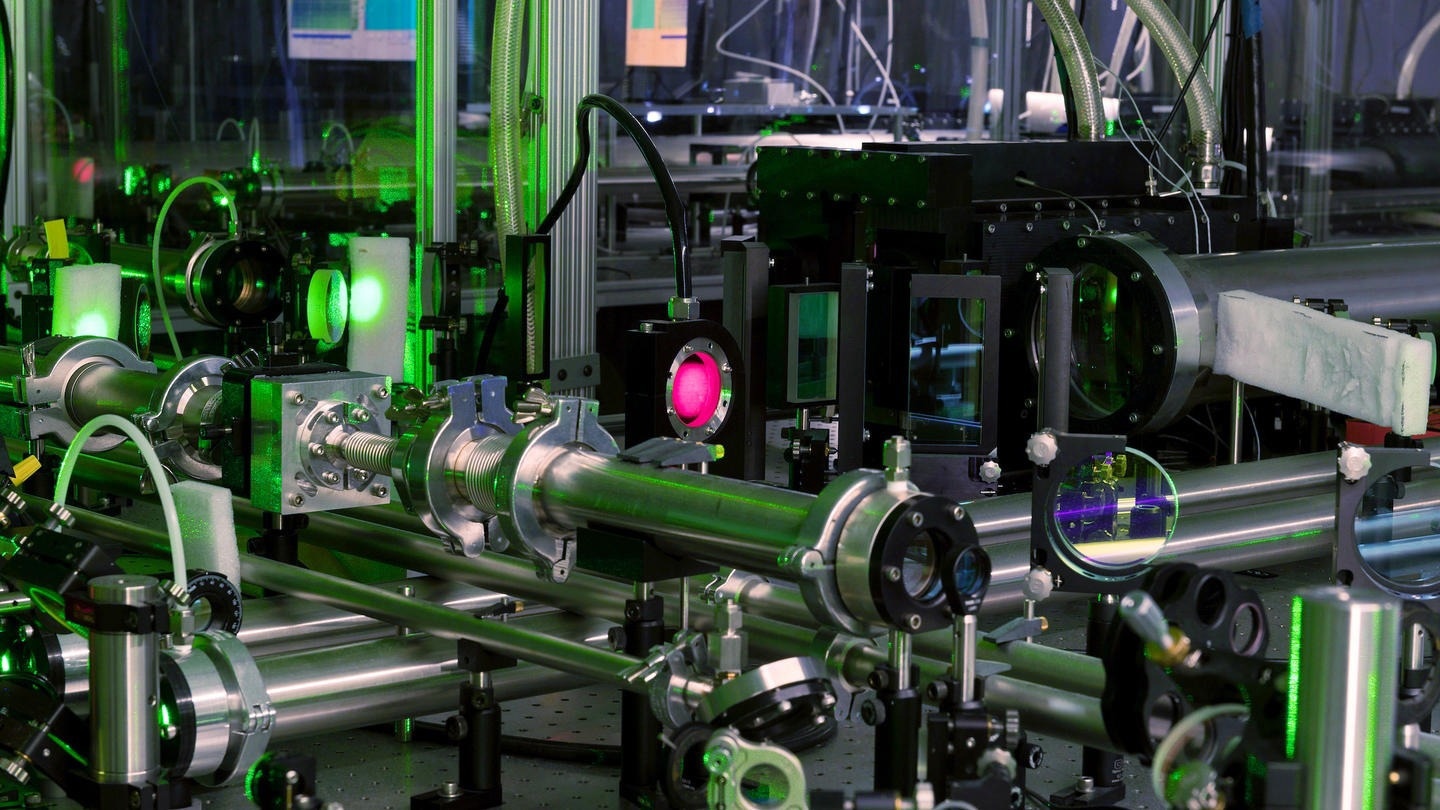A common forecasting method has been utilized by researchers to gain knowledge about how powerful lasers convert hunks of solid material into soups of electrically charged particles called plasmas.

PPPL provides key diagnostics for high-density, laser-created plasma physics research performed at Colorado State University’s Laboratory for Advanced Lasers and Extreme Photonics. Image Credit: Bill Cotton/Colorado State University Photography.
Employing a time-tested method in a new context could assist scientists in making significant measurements in inertial confinement fusion devices. It is a concept that is being explored as a method for fusion energy to be harnessed.
This process, which helps power the sun and stars, could be a green method to create electricity on Earth in the absence of producing greenhouse gases or radioactive waste that is long-lived.
The researchers from PPPL (Princeton Plasma Physics Laboratory), a U.S. Department of Energy (DOE) national laboratory controlled by Princeton University, have quantified the dense cloud of plasma that has been produced by a powerful laser striking a solid target. The intense heat caused atoms from the surface to emit and evaporate energetic X-Ray light.
With the help of the Doppler effect, the measurement gauged the speed of the light—which is the same phenomenon that makes ambulance sirens increase in pitch as they approach and further fall as they get away. Meteorologists depend on this effect to quantify the speed of thunderstorms.
Physicists wish to gain more knowledge of dense plasma partially since it has been produced by inertial confinement fusion devices—facilities like the DOE’s National Ignition Facility at Lawrence Livermore National Laboratory that generated more fusion power than the energy it took to heat the plasma in 2022.
The more physicists can understand the behavior of the consecutive dense plasma, which is nearly ten billion times denser compared to the plasma inside doughnut-shaped magnetic tokamaks, the more probable they could make fusion in a highly efficient manner.
The researchers found proof of the presence of a barrier, or sheath, between the outer and inner layers of the dense plasma cloud. This observation indicates that laser-produced dense plasma acts in the same way as less-dense plasma.
The discovery marks the first time scientists have made use of this Doppler method to quantify highly dense plasma. The experiment was executed with the help of Colorado State University’s Advanced Laser for Extreme Photonics (ALEPH) facility.
The outcomes display that dense plasma acts pretty much similar to the other kinds of plasma, and behavior that researchers have not been capable of directly noting so far, reported Frances Kraus, lead author of a study reporting the outcomes in the journal Physical Review Letters.
Before this finding, scientists did not know if they could quantify X-Rays with accuracy in dense plasma, which can obscure such observations.
Scientists did not believe that you could pick out the X-Ray behavior within all of the other signals. But our diagnostic shows that you can.
Frances Kraus, Study Lead Author, Princeton Plasma Physics Laboratory
Having been invented in 1960, lasers are utilized for an extensive range of tasks, such as welding, surgery, and printing. A laser—the term refers to “light amplification by stimulated emission of radiation”—is comprised of rays of light that have the same frequency.
The photon particles that compose laser light are all traveling in a similar direction and orientation. Since lasers have turned out to be highly powerful, the need to gain insights into their basic characteristics has increased.
You have to understand what these lasers create before you can find uses for them. This is fundamental stuff. These super-powerful lasers will have lots of applications in the future. We just don’t know yet what they will be.
Frances Kraus, Study Lead Author, Princeton Plasma Physics Laboratory
Collaborators on this study included researchers from Colorado State University. The study was financially supported by the Office of Science (Fusion Energy Sciences) and LaserNetUS.
Journal Reference
Kraus, B. F., et al. (2022) Ablating Ion Velocity Distributions in Short-Pulse-Heated Solids via X-Ray Doppler Shifts. Physical Review Letters. https://doi.org/10.1103/PhysRevLett.129.235001.